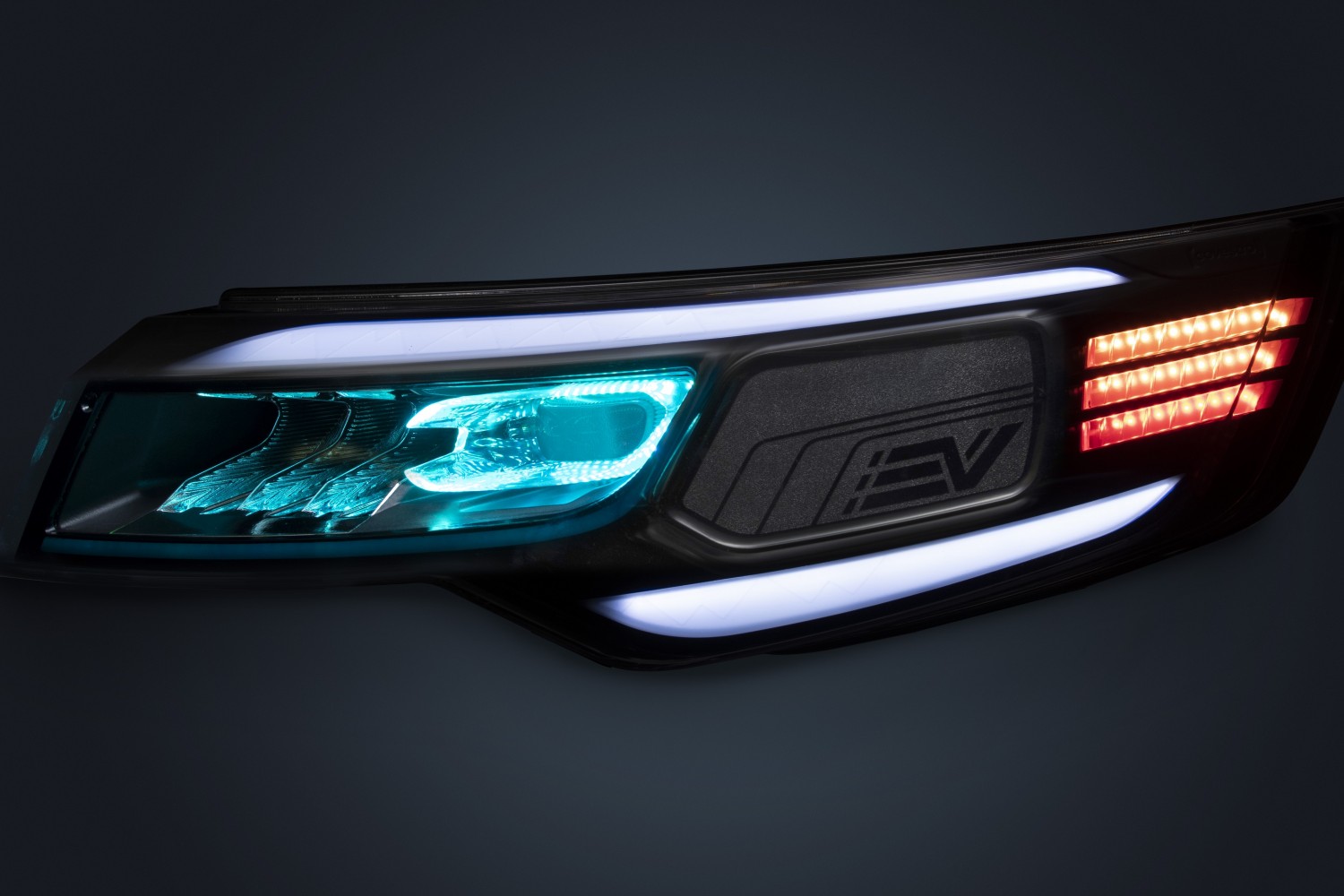ÃÜÌÒAV develops innovative design for future vehicle lighting
Headlight concept using only one plastic material
- Polycarbonate provides both functional and aesthetic benefits
- Modular design reduces complexity and costs
- Weight saving exceeding 1.5 kilograms lowers emissions
- Simplified recycling process due to focus on one plastic
ÃÜÌÒAV has developed an innovative automotive for the vehicle lighting of tomorrow. The visionary approach is based on different types of the polycarbonate Makrolon? and addresses the high demands in terms of functionality and aesthetics. Compared with conventional solutions, the new modular design makes do with fewer individual components and reduces assembly steps, space requirements and costs. In total, the headlight prototype may drop over 1.5 kilograms of weight, which contributes to reduced emissions and greater vehicle range.
The development is another example of ÃÜÌÒAV¡¯s ambition to become fully circular. This also includes developing products and applications that make the recycling process easier. Thanks to the modular design of the headlight and a focus on a single plastic material type, the amount of work required for separating, sorting and storing materials in recycling streams is reduced. Apart from pure polycarbonate and a blend with acrylonitrile butadiene styrene (ABS), the headlight uses only a scratch-resistant coating for the outer lens cover and metalization on the reflectors.
Advanced technologies and reduced complexity
¡°We work together with car manufacturers and their suppliers and harness our global resources to implement advanced technologies. Examples are heat sinks that are integral to the housing, LEDs, multi-shot molding, in-mold-electronics, sensor integration and more,¡± explains Jim Lorenzo, Application Development Engineer at ÃÜÌÒAV LLC. ¡°This also includes designing parts and molds that provide the right balance between functionality, aesthetics and cost efficiency.¡± While traditional automotive headlights have a complex design and usually consist of dozens of components and screws, the design of this modular concept is reduced to a reflector with housing, a collimator lens, a bezel and an outer lens cover.
The LED modules for low and high beam and the corresponding reflectors are made of the thermally conductive polycarbonate Makrolon? TC8030 and the dimensionally stable type Makrolon? DS801, respectively. The production process combines multi-component injection molding with mold-in-place design. Thanks to these materials and the efficient production technology, the manufacturer can eliminate the additional cost and weight of heat sinks, attachments and other components.
Integrated heat management
In addition to light sources, the vehicle headlights of the future will also integrate technologies such as LiDAR, radar and cameras. This will require the use of thermally conductive materials, in order to dissipate the heat generated by the electronics and light sources. For this purpose, Makrolon? TC8030 integrates heat management directly into the housing of the new headlight concept.
The bezel made of different grades of Makrolon? polycarbonates is produced in a three-shot molding process. It hides the advanced driver assistance systems and consolidates the daytime running lights, turn-signals and pedestrian safety lighting into one part. The sensors are hidden behind a LiDAR-transparent panel. The bezel blends cutting-edge performance and aesthetics, including a ¡°dead front¡±, seamless appearance, a high gloss finish enhanced with laser-etched effects and diffused back-lighting for improved safety and high recognition value.
About ÃÜÌÒAV:
ÃÜÌÒAV is one of the world¡¯s leading manufacturers of high-quality polymer materials and their components. With its innovative products, processes and methods, the company helps enhance sustainability and the quality of life in many areas. ÃÜÌÒAV supplies customers around the world in key industries such as mobility, building and living, as well as the electrical and electronics sector. In addition, polymers from ÃÜÌÒAV are also used in sectors such as sports and leisure, telecommunications and health, as well as in the chemical industry itself.
The company is geared completely to the circular economy. In addition, ÃÜÌÒAV aims to achieve climate neutrality for its Scope 1 and Scope 2 emissions by 2035, and the Group¡¯s Scope 3 emissions are also set to be climate neutral by 2050. ÃÜÌÒAV generated sales of EUR 14.2 billion in fiscal year 2024. At the end of 2024, the company had 46 production sites worldwide and employed approximately 17,500 people (calculated as full-time equivalents).
Forward-Looking Statements
This news release may contain forward-looking statements based on current assumptions and forecasts made by ÃÜÌÒAV. Various known and unknown risks, uncertainties and other factors could lead to material differences between the actual future results, financial situation, development or performance of the company and the estimates given here. These factors include those discussed in ÃÜÌÒAV¡¯s public reports which are available at www.covestro.com. The company assumes no liability whatsoever to update these forward-looking statements or to conform them to future events or developments.








